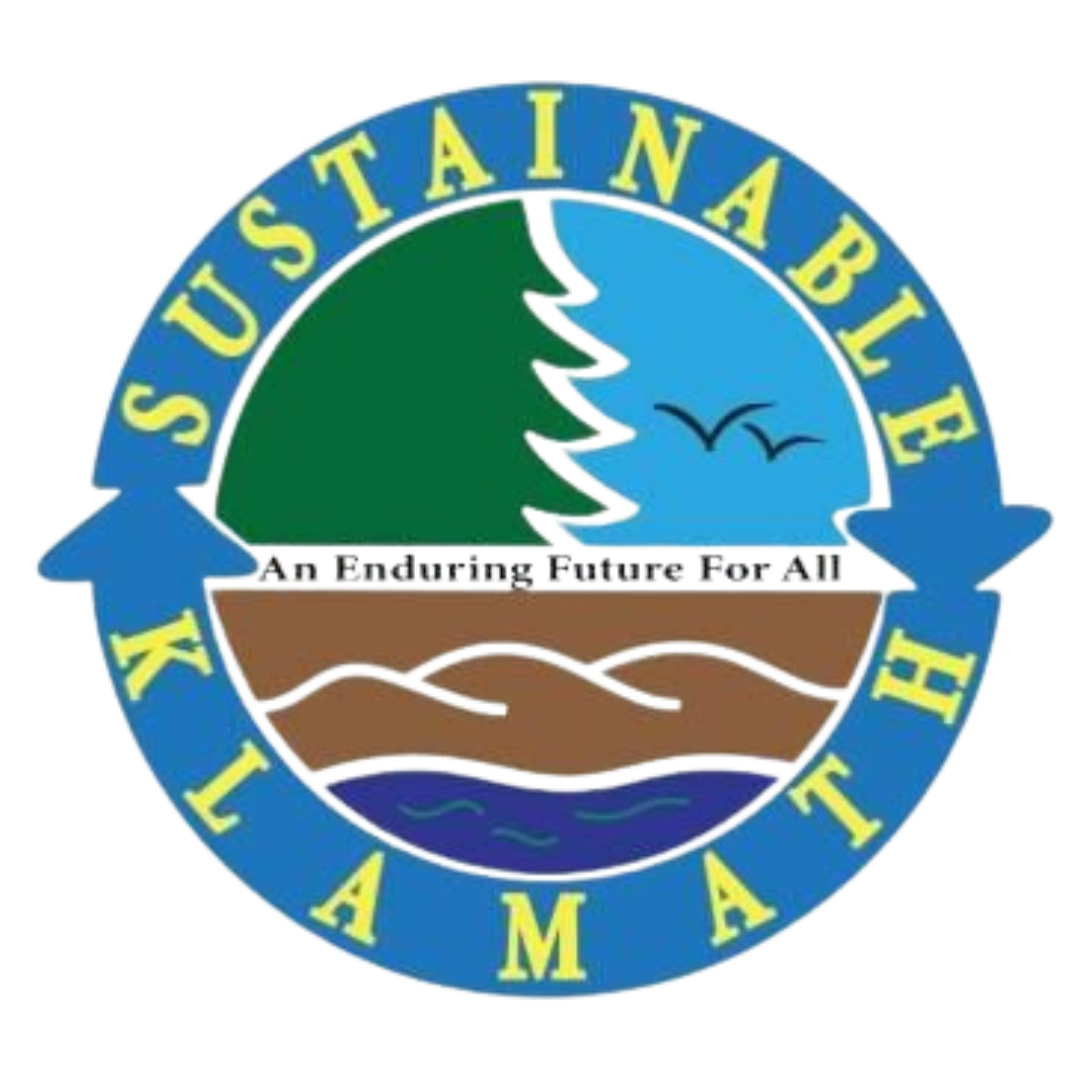by Alissa Oliverson (SWAC Chair) December 2021
Trash Talk series from Sustainable Klamath, Solid Waste Action Committee (SWAC)
It’s that time again, when we look forward to the possibilities of a new year and decide how we will rewrite our lives for the next 365 days. As we consider personal care resolutions like exercising more, it can also be good for us to incorporate activities that benefit the environment, too. As you contemplate your resolutions for 2022, consider how you can add one or more of these sustainable activities to your 2022 story.
1. Eat less meat
Industrialized farming practices are responsible for much of the observed soil erosion, and for soil pollution across the planet. According to Project Drawdown, eating a plant-based diet is one of the top 5 ways to reduce and reverse climate change. And a report by the Intergovernmental Panel on Climate Change (IPCC) highlights the fact that when humans eat less meat we lower our carbon footprint, mitigate deforestation, free up land space to be rehabilitated, and improve our own health. Eating less meat can lower blood pressure and cholesterol levels, reverse and/or prevent type 2 diabetes, help you lose weight, reduce the risk of developing cancer, minimize the risk of having a stroke, slow the progression of Alzheimer’s and dementia, and help you live longer in general. And you don’t have to go completely vegan to reap these personal and ecological benefits. A Flexitarian diet will do. So, consider “Meatless Mondays”, or “Vegan before 6pm daily”, or purchasing meat and dairy only if it is sustainably produced, or even “Veganuary” (going vegan for the month of January). There are many ways to reduce your meat consumption and the benefits far outweigh the mild personal discomfort of making a change.
2. Say NO to fast fashion
Fast fashion is a highly profitable and exploitative business model focused on cheap, trendy clothing that samples ideas from the catwalk or celebrity culture and mass produces them, often by exploiting workers in inhumane conditions. Fast fashion is also responsible for massive amounts of textile waste and water pollution. One of the best ways to help mitigate the harm fast fashion causes is to go for slow fashion: clothes made under ethical working conditions from sustainable fabrics that are meant to last. You can also incorporate thrift shopping into your wardrobe, thereby reducing your consumption of new clothes while simultaneously recycling used ones. Some major fashion brands are taking on the responsibility of eliminating their harmful textiles and processes, so you could check them out too. For example: it might not seem like fashion, but Tesla, BMW, and Volvo have adopted vegan leather instead of cowhide for their car seats. Tommy Hilfiger, Calvin Klein, Gucci, and Louis Vuitton have all embraced vegan leather, and Prada has been using recycled nylon in place of cow leather for years.
3. Educate yourself… for free
There are several highly useful documentaries out there that will give you the information you need in order to make more sustainable choices. From Fast Fashion to water, soil, and plastic pollution, to plant-based diets, to the intersectionality of economic status, gender, and race as they apply to sustainability topics – there’s at least one documentary out there that will speak to you and give you vital information about our changing world. The Waterbear app houses many documentaries you might find useful. The app itself is free, and so are the documentaries. So, this year, consider watching by yourself, or even hosting a watch party with your friends and family once a month. Most streaming services have documentaries worth watching, including: Kiss the Ground, Seaspiracy and Cowspiracy (Netflix), Food Inc. (Amazon Prime Video), Eating Animals (Hulu), The True Cost (Waterbear), and Plastic Wars (YouTube) to name a few.
4. Swap eco-friendly products into your life
Q-tips can be swapped out for products like Last Swab, swabs made from silicone that replace up to 1,000 swabs and are easily washed after each use. Kleenex can be swapped out for handkerchiefs. Cloth towels can be swapped in for paper towels. Every day 6 million pounds of paper towel waste is produced in the US alone. Paper towels are not recyclable and when they decompose in the landfill, they produce methane gas – one of the leading causes of global warming. You can find re-rollable cotton/flannel towels on sites like Etsy, or even make your own. You still get the convenience of the roll, you won’t be throwing your money in the trash with each used towel, and you’ll be doing your part to help draw down methane emissions from landfills.
5. Borrow and lend tools or other equipment that you don’t use all the time
If you need a tool for a home improvement project, check out Sustainable Klamath’s Tool Library at 1221 Main Street (next to Rodeo’s Pizza). The Tool Library is stocked with over 1,000 tools that you can rent for your project and return when you’re done. You’ll save money on a tool you might otherwise buy and never use again, which is a great way to keep your budget in check and fulfill the most important R in the sustainability behavior chain: Reduce. Borrowing can extend to other items you might need on a temporary basis, like stand-up mixers for baking, extra chairs for special occasions, or even luggage for infrequent travelers.
Whatever resolutions you decide to pencil in for 2022, know that Sustainable Klamath is here to encourage and support the health and wellbeing of our region and its people. For more information about sustainability in the Basin, to volunteer or donate, please visit SustainableKlamath.org. Happy New Year!

Leave a Reply